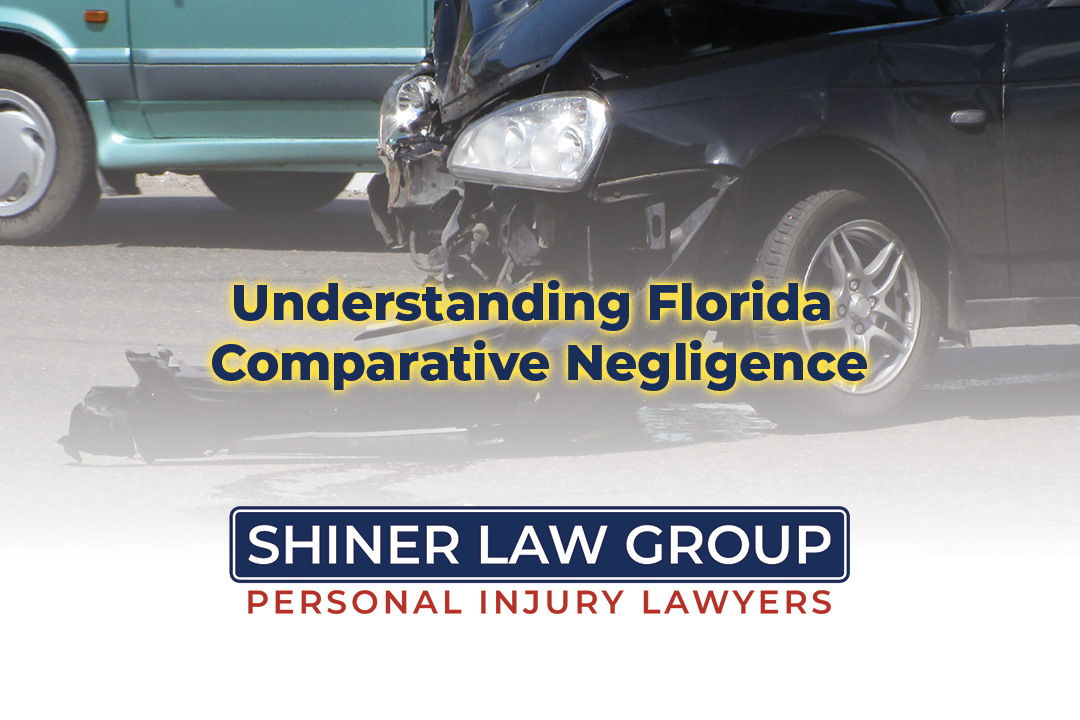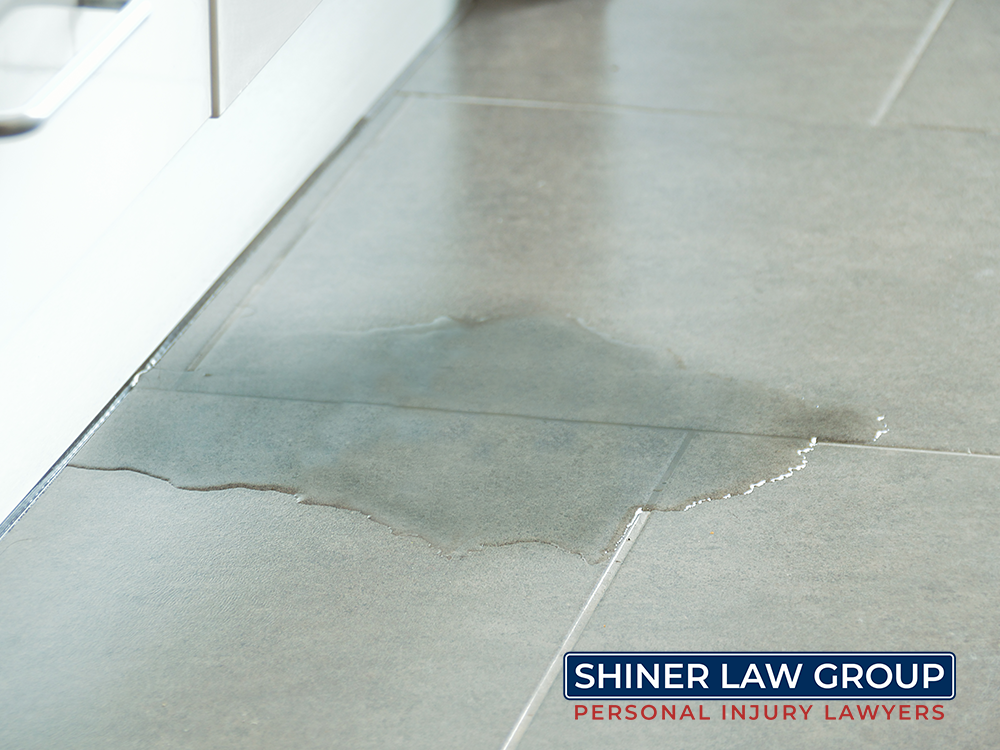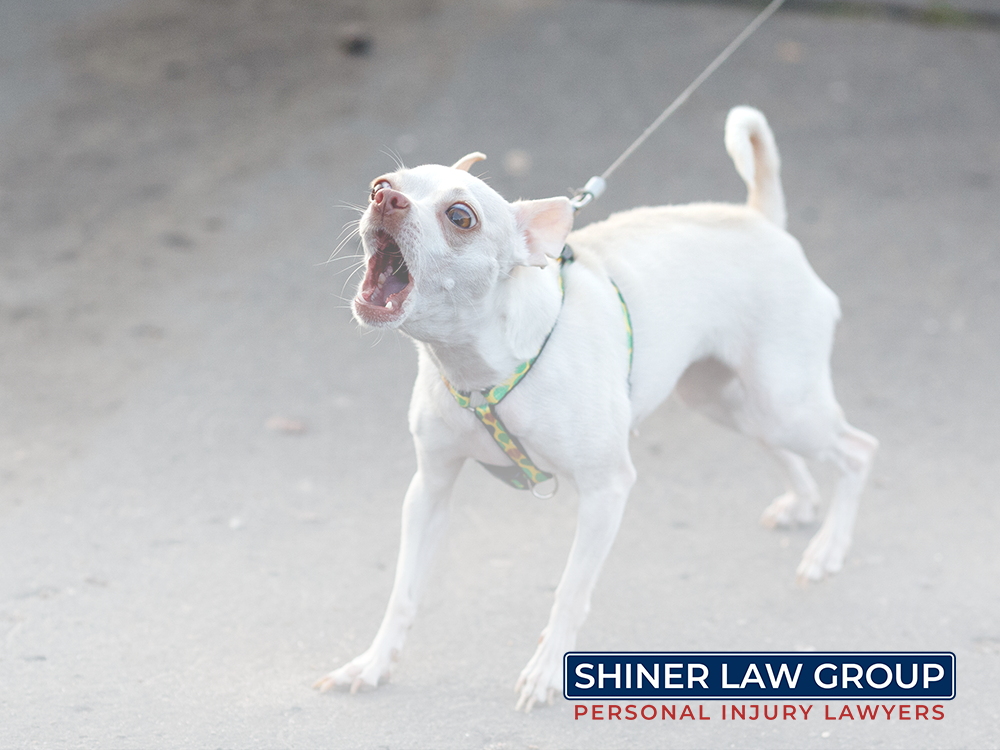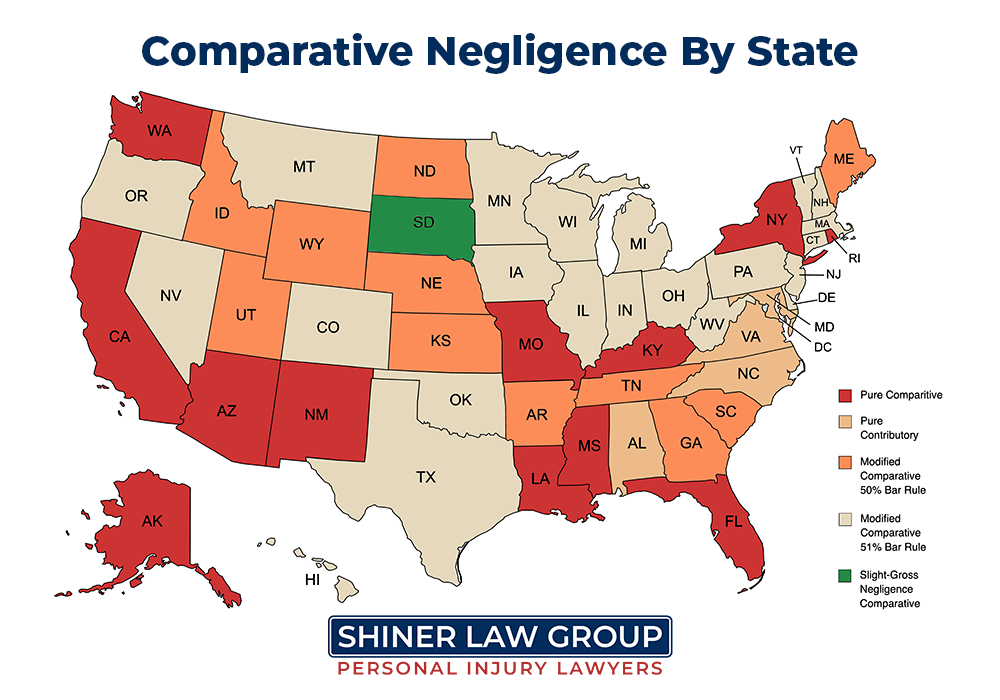
Understanding the concept of comparative negligence, particularly Florida’s comparative negligence law is crucial for anyone involved in a personal injury case. This principle determines how fault is apportioned and can significantly impact the amount of damages you may recover.
This comprehensive guide delves into the intricacies of comparative negligence, exploring its origins and evolution. We also examine different systems of comparative negligence across various jurisdictions.
We’ll focus extensively on Florida’s pure comparative fault system – a distinctive approach influencing outcomes in car accidents or medical malpractice cases. You will gain insights into how this system affects your personal injury claims and learn practical examples to illustrate these concepts further.
Additionally, we’ll discuss potential challenges with proving degrees of negligence under Florida law and offer tips on calculating damage awards under pure comparative negligence rules.
To provide context, we compare Florida’s laws with other states’ approaches to handling plaintiff’s damages due to someone else’s negligence. By understanding these differences, you can better navigate your personal injury claim process.
Our accident and injury lawyers at Shiner Law Group represent injury victims like you in many practice areas within personal injury law. If a person or company has injured you, contact our office for a free 100% free case evaluation to discuss your case details.

Understanding Comparative Negligence
Comparative negligence is crucial in determining liability and compensation when multiple parties share fault. This legal system has different variations across states, impacting personal injury claims significantly.
Origin and Evolution of Comparative Negligence
The comparative negligence principle was developed to address situations where the plaintiff and defendant contributed to an accident or incident causing harm. This system evolved as a more equitable alternative to traditional contributory negligence laws that could bar plaintiffs from recovery if they were even slightly at fault. The shift towards comparative negligence began in the 20th century with its adoption by several U.S states like Florida.
Different Systems of Comparative Negligence
The country uses three main types of comparative negligence systems: pure contributory negligence, modified comparative fault (50% rule), and modified comparative fault (51% rule). In a pure contributory negligence state, plaintiffs cannot recover damages if they’re found even 1% at fault for their injuries. On the other hand, under both forms of modified rules – followed by most states – injured parties can seek damages only if their percentage responsibility is below either 50 or 51 percent, respectively.
Florida’s unique approach is known as “pure” comparative fault which allows claimants some form of recovery regardless of their degree of culpability. Therefore, it is essential to be aware of the various interpretations of these principles in different states when dealing with interstate disputes or accidents. This makes it essential for anyone involved in an interstate dispute or accident to understand how these laws operate within relevant jurisdictions.
Florida’s Pure Comparative Fault System
Personal injury law in Florida is a bit different from other states. They have a unique approach called the “pure comparative fault” system. It’s unlike the traditional “comparative fault” rule that other states follow.
What is Pure Comparative Fault?
The pure comparative fault system in Florida allows an injured party to seek damages even if they were mostly responsible for their injuries. This system recognizes that accidents often involve shared responsibility between two or more parties. Each party’s level of negligence determines their share in the liability.
For example, if you are found 60% at-fault for an accident that caused your injuries, you can still recover 40% of your total damages under Florida law. This means that even if you bear most of the blame for an incident leading to harm, recovery is not completely barred, as it might be under different systems.
How Pure Comparative Fault Affects Personal Injury Claims
Pure comparative negligence significantly impacts how compensation amounts are determined in personal injury cases. The claimant’s degree of responsibility directly influences their potential damage award. Higher levels of culpability result in lower compensations and vice versa.
This legal principle ensures fairness by proportionately reducing awarded damages based on individual contributions towards causing harm rather than outright denying any form of recovery because one was partially at-fault.
Practical Examples of Comparative Negligence in Florida
Want to know how Florida’s “pure comparative fault” rule applies in real-life situations? Let’s dive into a few hypothetical scenarios where accidents or incidents cause harm due to shared responsibility between two or more parties.
Example 1: Car Accident at an Intersection
Picture this: you’re driving slightly above the speed limit when another driver runs a red light and hits your car. The court determines that you were 20% at fault for speeding while the other driver was 80% responsible for ignoring traffic rules. Under Florida’s pure comparative negligence law, if your total damages amount to $10,000, you would be eligible to recover $8,000 (80%) from the other party.

Example 2: Slip and Fall Incident in a Store
You’re shopping in a store where there is water on the floor but no warning sign displayed. You slip and fall as a result of this hazard but were also distracted by texting on your phone at that moment. If it’s determined that you were 30% responsible because of being distracted, then any compensation awarded will be reduced by this percentage under Florida’s pure comparative negligence system.

Example 3: Dog Bite Case with Provocation Involved
A dog bites you while walking through your neighborhood even though its owner had put up signs warning about their aggressive pet. However, before getting bitten, you ignored these warnings and tried petting the dog anyway without its owner’s permission, leading them to bite out of fear or agitation. The court might find both parties partially liable – say split evenly at fifty percent each- meaning whatever award given would only cover half cost incurred during the treatment process since according to laws governing dog bite cases in Florida.

Impact of Comparative Negligence on Personal Injury Claims
Realizing Florida’s particular approach to determining responsibility is vital when it comes to Florida personal injury cases. This knowledge can significantly impact your potential recovery from a personal injury lawsuit. Even though you may have contributed to the accident, Florida’s pure comparative negligence system can still entitle you to some form of compensation.
Calculating Damage Awards Under Pure Comparative Negligence
The pure comparative negligence system in Florida allows injured parties to recover damages proportionate to their degree of fault. If you were found to bear 30% of the blame for an accident causing $100,000 in damages, your award would be reduced by that same amount to $70,000. It’s important to note that even if your level of responsibility was higher than the other party involved – say 60% or more – you could still receive compensation.
This method differs greatly from states operating under a modified comparative negligence rule where plaintiffs cannot recover any damages if they’re found equally (50/50) or more at fault than the defendant(s). Here’s how different states calculate damage awards.
Potential Challenges with Proving Degrees of Negligence
Determining degrees of negligence isn’t always straightforward and often requires expert testimony and thorough investigation. The challenge lies in proving who was negligent and to what extent each party contributed towards causing the incident.
A skilled personal injury lawyer can help gather necessary evidence such as police reports, witness statements, and photographs, and present them effectively before a judge or jury. It’s also vital to remember that insurance companies might attempt to minimize their policyholder’s liability while exaggerating yours – another reason why having experienced legal representation is beneficial during negotiations or trial proceedings.
Comparison of Negligence Laws Across States
Rules governing contributory and comparative negligence vary widely among states in the US. It’s crucial to compare these laws, especially when dealing with multi-state issues such as interstate car accidents or business disputes.
Virginia vs. Florida
In Virginia, any degree of fault on the part of a claimant renders them ineligible for damages in a lawsuit. In contrast, Florida’s pure comparative negligence system allows claimants to recover damages proportional to their degree of fault, no matter how high that might be.
Other State-Specific Approaches
- Texas: The Lone Star State employs a modified version of comparative negligence known as proportionate responsibility. If you’re more than 50% responsible for your injuries in Texas, then you can’t collect anything from other at-fault parties (Texas Civil Practice and Remedies Code § 33).
- New York: Like Florida, New York also uses the pure comparative negligence standard, allowing plaintiffs who are partially at fault to still receive compensation (New York Civil Practice Law & Rules Article 14-A).
- Illinois: Illinois operates under what is called “modified comparative negligence”. Under this law, injured parties can only seek damages if they were less than fifty percent responsible for their injury (735 ILCS 5 / Art II Pt 11 Subdiv 1 Sec 2-1116).
Understanding each jurisdiction’s specific rules is critical when pursuing personal injury claims involving multiple jurisdictions or interstate incidents. The wide range in liability systems across different states underscores the importance of seeking legal advice from a qualified attorney.

FAQs in Relation to Comparative Negligence, Florida Comparative Negligence, Comparative Negligence in Florida, What is Comparative Negligence
What is Comparative Negligence in Florida?
In Florida, Comparative Negligence means that fault for an accident isn’t placed solely on one party, and damages are awarded proportionally based on each party’s degree of responsibility.
What is the Difference Between Contributory Negligence and Comparative Negligence in Florida?
Contributory Negligence completely bars recovery if a plaintiff was at all negligent, while under Comparative Negligence in Florida, a plaintiff can recover even if they were 99% at fault, with their recovery reduced by their percentage of fault.
What is Pure Comparative Negligence?
Pure Comparative Negligence allows a damaged party to recover even if they were 99% at fault, with their recovery reduced by their degree of liability.
Does Florida Have a 50 Percent Rule for Comparative Negligence?
No, unlike some states that follow modified rules, Florida follows Pure Comparative Fault laws without any threshold or limit.
Have Questions About Comparative Negligence? Speak With A Lawyer Today
Understanding comparative negligence is crucial for anyone involved in a personal injury case, as it can impact the outcome and compensation received.
Each state has its own laws regarding comparative negligence, so it’s important to consult with an experienced injury lawyer who knows the rules in your area.
Whether you’re dealing with comparative negligence in Florida or another state, having a knowledgeable attorney on your side can help ensure fair compensation for your injuries.
Don’t let comparative negligence catch you off guard – educate yourself and seek legal guidance to protect your rights.
Schedule a 100% free consultation and case evaluation with one of our experienced personal injury lawyers. Please call us at (800) 364-4444 or fill out our free online case evaluation form below. Our lawyers and team of professionals look forward to providing you with a customized legal approach to your case and a trustworthy support system while you recover from your injuries.